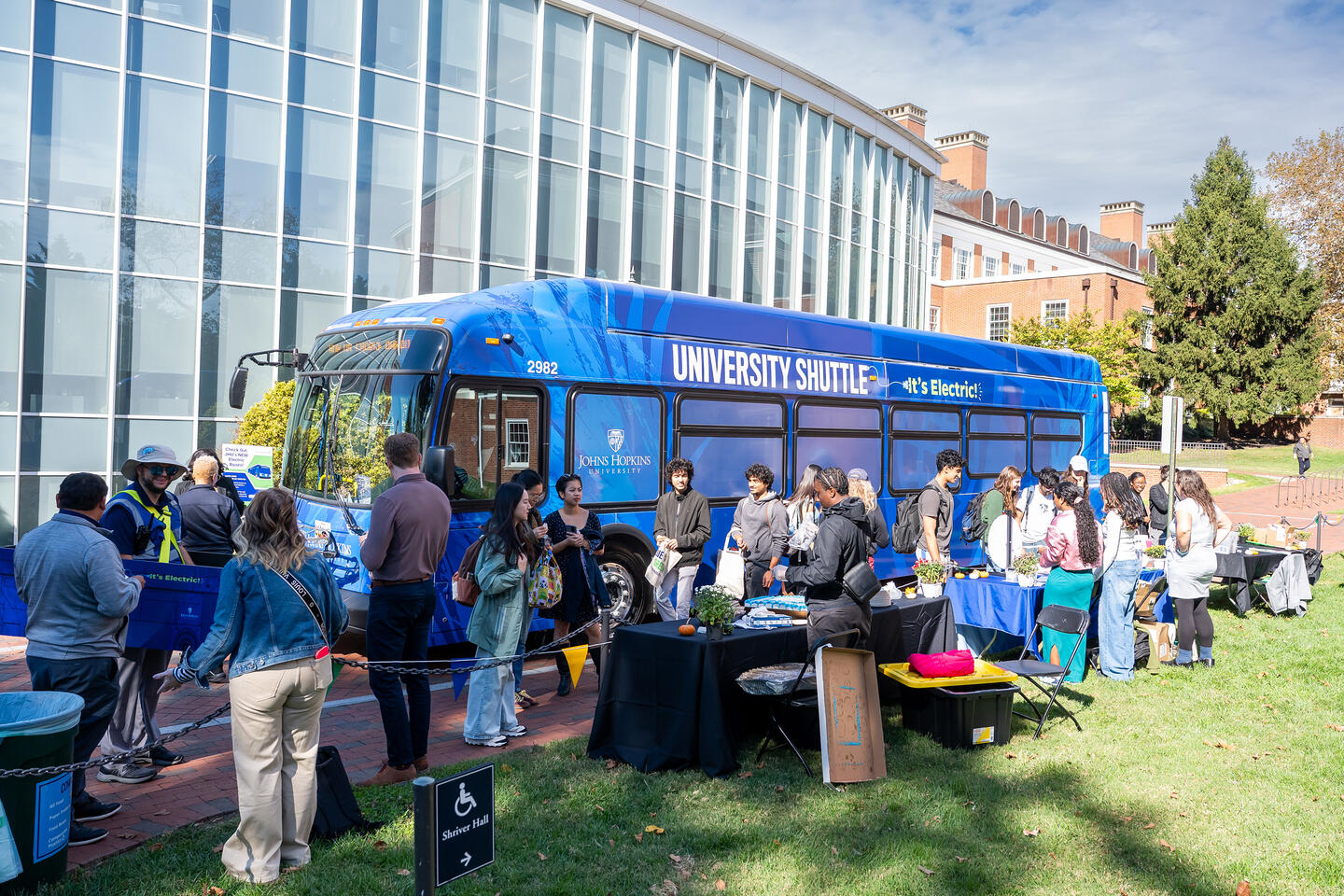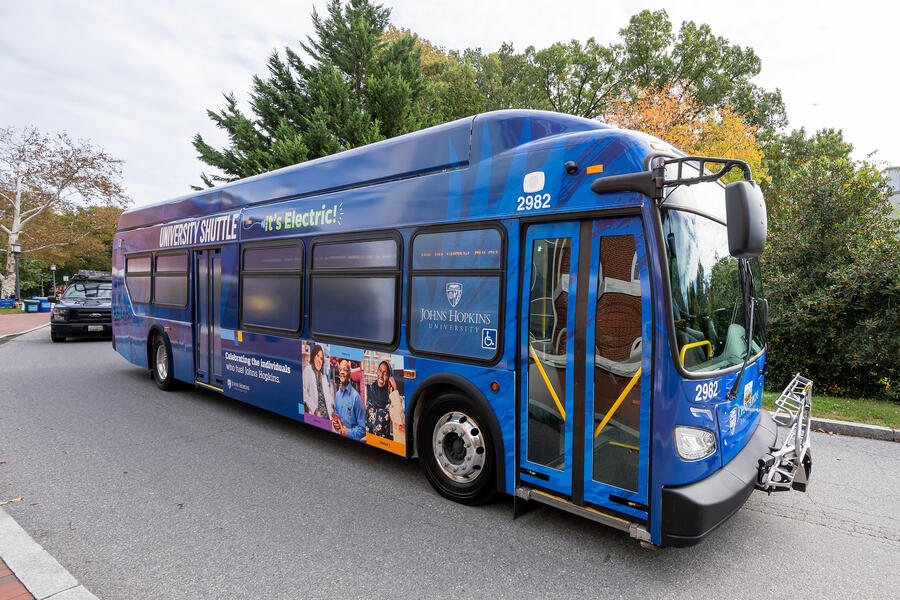- Name
- Johns Hopkins Media Relations
- jhunews@jhu.edu
- Office phone
- 443-997-9009
What's big and blue and moves silently and cleanly through city streets?
The answer was parked behind Shriver Hall on Wednesday morning, where Johns Hopkins Transportation Services quite literally rolled out the newest vehicle in the Hopkins shuttle bus fleet to a crowd of admirers.
Is "new bus smell" a thing? The pristine interior of the shiny new bus certainly has a fresh-from-the factory aroma. But what's more important is what you won't smell emanating from this 40-foot-long vehicle: exhaust fumes. The bus's flanks explain it all—along with the words "University Shuttle" are these: "It's electric!"
After years of planning, Johns Hopkins has acquired its first electric buses. The new shuttle is a model XE40 built by New Flyer Industries in St. Cloud, Minnesota. It offers seating for 33 passengers with room for at least that many standees. While painted Hopkins blue, each bus is really a green machine avoiding the release of up to 110 tons of greenhouse gases annually compared to the diesel models the university has long relied on.
Johns Hopkins has a fleet of a dozen buses that moves about a million passengers a year, said Bob McLean, vice president for facilities. The university recently received five electric buses and expects to add five more in the near future as it moves toward a fully electric fleet, one of the goals of the university's Climate and Sustainability Plan.
"It's a huge milestone for our sustainability plan," McLean said of the arrival of the first buses. "It's a significant visual reminder of what we're trying to achieve, and it's a tremendous asset for the university."
This greening of the fleet, McLean added, was facilitated with help from the Maryland Energy Administration. He also acknowledged the role played by Academy Bus, the transportation company that operates the university's buses and will charge the electric ones at their Baltimore garage. The electric buses will soon rotate into service on the busy Homewood-Peabody-JHMI route.

Image credit: Larry Canner for Johns Hopkins University
Each bus has six batteries—four in the roof and two in the rear, said Greg Smith, director of transportation services.
"[They] should be enough to power these buses for 16 to 18 hours of actual drive time on the streets," he said. "Which, if you think about it, is really the whole day. Two drivers, two shifts, one whole day of service from 6 a.m. to midnight."
Another plus: Passengers in wheelchairs can enter and secure themselves more quickly in the new buses, thanks to an improved lift system and a robotic arm that quickly secures chairs at the push of button without assistance from the driver. The bus also features regenerative braking, using kinetic energy from braking to generate additional electricity, extending the vehicle's range.
But riding is believing, so folks were invited aboard for a quick lap around the campus. Driver Tana Edmunds, who works for Academy Bus, said there was no learning curve to operating an electric bus compared to a diesel one, save one thing: the electric bus is so quiet and free of engine vibration that she must check the dashboard lights to see if the motor is running.
"You're experiencing what the future of campus transportation looks like: clean, quiet, and efficient," Leana Houser, sustainability manager in the Johns Hopkins Office of Climate and Sustainability, told riders as we smoothly glided along San Martin Drive. "These buses help conserve energy, cut emissions, and create a more pleasant ride for everyone who travels between our campuses. Thanks for riding today and for being a part of JHU's journey into a more sustainable future."
Posted in University News
Tagged sustainability, transportation








